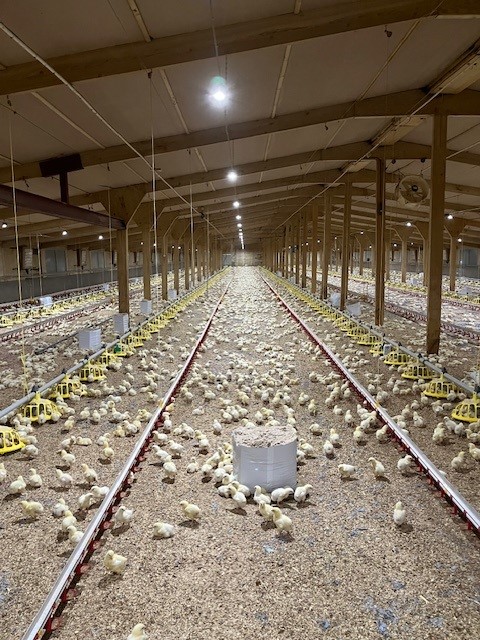By Michael McCreesh, SenseHub Poultry
Heating equals roughly 25% of the production costs on broiler units[1] but limiting this to cut costs can be a false economy when you consider the negative knock-on effects this can have on feed and water consumption and, therefore, daily liveweight gain.
The first four days of brooding are crucial to start the chicks’ development and if they do not get off to the best start, this can have a knock-on effect on the birds finishing weights – with an estimated loss of up to 4p a bird.
At placement, chicks cannot regulate their own temperatures so heavily rely on the environment around them to stay comfortable.
In the recent cold weather, while the air temperature in the housing may have been set to the correct temperature, we’ve been seeing that the concrete doesn’t hold the heat well and is considerably colder than ideal.
This can cause the chicks to huddle, reducing their movement and ability to find the feeders and drinkers straight away, slowing down their growth from the outset.
The concrete temperature should be 28°C with the litter at 32°C, but if the temperature is even a degree below target, you will find that the chicks’ activity level drops severely.
This delay reduces feed and water intakes and delays potential weight gain, while increasing the likelihood of diseases, like pulmonary hypertension syndrome.
With each day equating to roughly 3% of a chick’s life, one or two days of poor activity will have a large impact on their end performance, especially if it takes a while for the shed to get to the correct temperature.
Ideally, producers should check the concrete temperature before placement, however having been to farms where there’s very little chick movement and it’s important to remember that there are steps that you can take if there are concerns around concrete temperatures once birds are housed.
Daily checks are still an important part of stockmanship. During these checks, take the concrete temperature as well as the air temperature to get the full picture especially for the first few days.
The best approach to monitoring concrete temperatures is to use a laser thermometer (which can be bought from Amazon for under £20) in several spots around the housing to identify hot and cold spots.
Another parameter to check is crop fill 24 hours after placement. This will determine how many of the birds are up and eating to help give you a complete picture of how the temperature is impacting the birds.
Monitoring the bird’s activity levels will also help you to assess their comfort levels, with non-moving birds being an indication that the temperature is not quite right.
This can be done visually by observing how many of the birds are walking around freely, and how many are huddled together.
SenseHub Poultry’s weight platforms are used to measure activity by the number of jumps on the scale. Using these this activity date, we can relate this mathematically to both environment and weight gain to optimise performance in different parts of the shed


